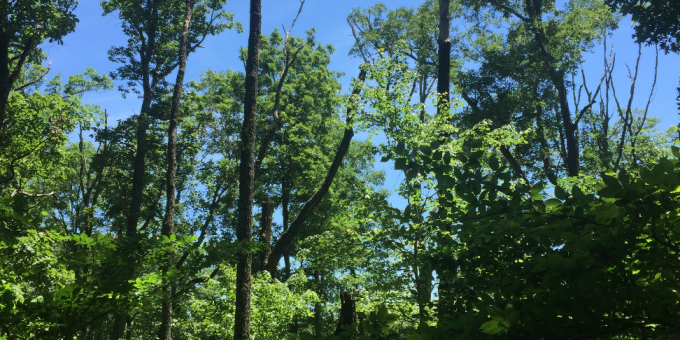
BEDFORD– A Final Supplemental Environmental Assessment and Draft Decision Notice for the Houston South Vegetation Management and Restoration Project on the Hoosier National Forest are complete and available for public review.
“We understand that there are a variety of opinions about conducting active management in this area. We have listened to all stakeholders at public meetings, thoroughly reviewed all of the public comments, and consulted with our Tribal partners and other state and federal agencies, including the U.S. Fish and Wildlife Service. The long-term health of the forest ecosystem and its ability to provide the many things we expect and need from it, including diverse wildlife habitat, carbon sequestration and storage, clean water, and sustainable recreational opportunities, are at the core of my decision to propose this project move forward. Using the latest relevant science, our staff analyzed the potential environmental effects of the project and found a “Finding of No Significant Impact,” as defined by National Environmental Policy Act regulations. We are confident that the actions proposed in this project will not cause harm to our water sources, wildlife, or any other resource. On the contrary, these actions are critical to the long-term well-being of the watershed as a whole and the wildlife that depend on the habitat within it,” said Chris Thornton, district ranger for the Hoosier National Forest.
Forest Supervisor Mike Chaveas added, “The project area is experiencing a steady decline in forest health as stressors such as overcrowding, more periods of drought, higher temperatures, and more storms with higher winds make trees more susceptible to pests and pathogens. The area has already suffered losses from “oak decline,” and there is a high likelihood that it will continue to kill more trees due to the continuing stress of drought and the presence of too dense stands. The Houston South Vegetation Management and Restoration Project will ensure a healthy and sustainable forest for the future by restoring native ecosystems and improving the forest’s resilience to the threats posed by climate change, non-native species, insects, and disease. Inaction is not a viable option for ensuring long-term forest health and sustainability. There is no option available that “lets nature fix itself.” The combined impacts of a legacy of land use prior to the creation of the National Forest, pressures and impacts from ongoing human use, and a fragmented landscape, and the continual and growing stresses of climate change all contribute to challenges faced by our forests and watersheds which must be addressed for long-term well-being.”
Per the National Environmental Policy Act, anyone who has previously submitted an official comment on the Draft Supplemental Environmental Assessment has 45 days to submit an objection to the draft decision (from the date the legal notice is published in the Bedford Times Mail, the newspaper of record). The documents are available at: https://www.fs.usda.gov/project/hoosier/?project=64831
Caption: Chestnut oaks that have been killed by oak decline in Jackson County, Indiana. (Cameron Dow)



